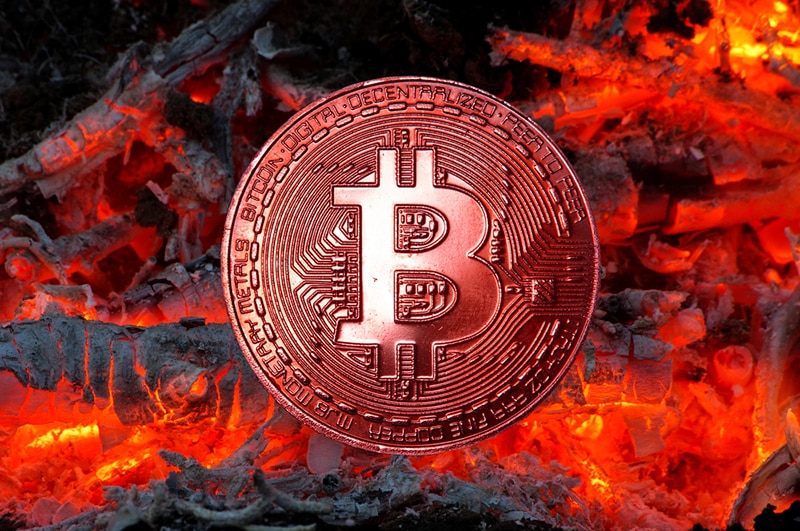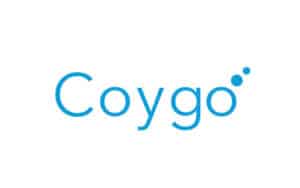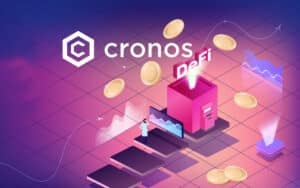Because of the popularity of cryptocurrencies, businesses are using blockchain for various purposes, including data security and investment verification. Different consensus mechanisms are used in these applications. The Proof of Burn is one of them.
What is Proof of Burn (PoB)?
PoB is used to validate new blocks on a blockchain. Only those who can prove that they have killed a certain number of coins are judged trustworthy enough to take over the validation of a new block. Participants in this consensus technique must destroy coins in order to generate fresh blocks.
PoB resembles a Proof of Work algorithm but with lower energy consumption rates. The block validation procedure in PoB-based networks does not necessitate the utilization of high-performance computing resources or mining hardware.
Because burning coins symbolizes virtual mining power, the more coins a user burns in support of the system, the more mining power they have and, as a result, the better their chances of being picked as the next block validator are.
How does it work?
In a PoB, the participant must show that they have destroyed a certain quantity of coins. The destruction of the coins is called Coin Burn. The coins are not destroyed; rather, they are transferred to a designated location (eater address). An eater address is one that is generated at random and is not linked to a private key. While most public addresses are created using a private key, the private key owner has access to any coins transferred to that address. Because this address is public, it is visible to all network participants. The coins kept there are essentially worthless and do not belong to anyone. This removes coins from the system regularly, thereby increasing the value of the cryptocurrency owing to artificial scarcity.
A miner invests a portion of his assets in showing his trustworthiness via coin burn. Over time, the more coins he destroys in the process, the more likely he is to be chosen to validate the following block. As a result, the person’s willingness to take an entrepreneurial risk is rewarded first and foremost. Many PoB-based systems pay a reward for each new block to ensure that miners do not lose money by voluntarily burning their currencies. This ensures that the gain at least covers the initial expenditure in the long run.
How Proof of Work is similar to Proof of Burn
One of the reasons Proof of Work blockchains are secure is that miners must invest a significant amount of resources to be lucrative in the end. This means that a PoW miner will have every motivation to act honestly and serve the network to avoid squandering their early investment.
For PoB algorithms, the concept is similar. Instead of investing in electricity, labor, or processing capacity, PoB blockchains are designed to be protected solely by currency burns.
PoB systems will pay block rewards to miners, similar to PoW blockchains, and the rewards are supposed to cover the initial investment of the burned coins within a specified amount of time.
Cryptos using PoB
Various coins use proof-of-burn as a consensus system, and it is growing more common. Some of them are:
- Counterparty (XCP), which employs PoB to seed its tokens
- Slimcoin (SLM) uses coin burning as a method of mining and consensus
- Triggers (TRIG) is based on the Counterparty system.
Upsides of PoB
- Because burning tokens and cryptocurrencies is done virtually, no mining equipment or hardware is necessary to carry out the process. The elimination of centralized hardware businesses creates an imbalance of advantages in the industry.
- It ensures the network’s stability and security by incentivizing miners to make investments (burning) with coins and tokens. As a result, it ensures network miners’ honesty and trustworthiness, as they do not want to lose their money.
- It does not necessitate a lot of energy or processing capacity. As a result, while this approach does not use 100 % renewable energy, it is expected to be far more environmentally friendly and sustainable.
- This protocol can also be used to add value to a new token in development or to burn unsold cryptocurrency in initial coin offerings (ICOs).
- It also makes it much easier to distribute tokens and cryptocurrency decentralized and equitable.
Downsides of PoB
- The verification of miners’ work is frequently delayed. It is not as fast as blockchains based on Proof of Work.
- PoB users suffer the same risk as investors because there is no guarantee of retrieving the value of the burned coins or tokens.
- Depending on the system, tokens to be burned may come from other cryptocurrencies (such as Bitcoin) or alternative Proof of Work (PoW) methods. This is a characteristic that many people believe makes this procedure less environmentally friendly.
- On a bigger scale, it hasn’t been demonstrated to work. It will need to be tested further to ensure its effectiveness and security.
- The process of burning a coin is not always visible or easily verifiable by a layperson.
Summary
Proof of Burn is a revolutionary way to obtain consensus on the blockchain. It can grow in popularity due to its promise of retaining decentralization and lack of resource-intensive mechanisms. Certain companies have already used coin burning to assist and enhance the price of their tokens, making them more appealing to investors. It has upsides and downsides.



